Getting Started
So You Want Purple Martins?
Join the club! Purple Martins make great neighbors with their social chatter, engaging flight acrobatics, and insect-eating habits. Once martins take residence in your yard, they return year after year. Martins also provide opportunities for enjoyable backyard science projects for young and old alike.
Do you have suitable habitat to host Purple Martins?
Purple Martins have a wide range (see map) and prefer an open area for their housing. You should have a clear area for the martin housing, at least 40 feet from any tall trees and within 30-120 feet from human housing. Placing the martin housing too far from human structures will actually discourage martins from using it!

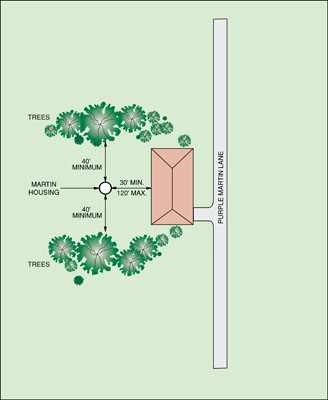
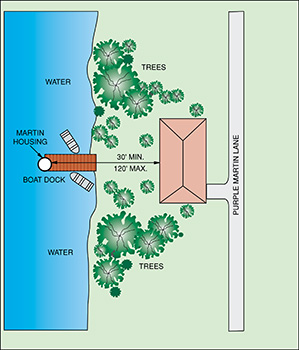
If your backyard is not suitable for Purple Martins, there are still plenty of ways to be active in the Purple Martin community. Do you know of a nearby school, senior living facility, park, or public gardens that have the ideal location for a Purple Martin house? Offer your knowledge and passion for martins by volunteering to monitor and manage a public martin colony.
What Kind of Housing Should I Get?
Gourds, houses, or a combination all work well. The most important thing to look for in any martin housing is quality. You want the housing to raise and lower and the cavities be easily accessible for conducting nest checks and cleanouts. Larger style cavities, 6”x11” are preferable to the smaller 6”x6” cavities. If you want an all-in-one system to start with, please check out our Gourd Rack Starter Bundle.
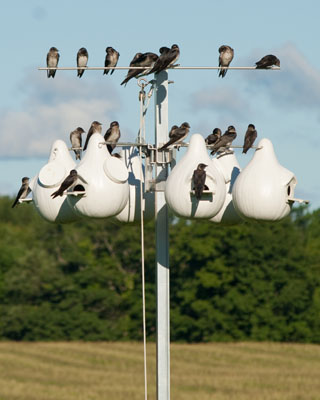
How Do I Attract?
Good location, attraction tools, and some patience.
Location—Purple Martins like wide open spaces, at least 40 ft from trees if possible, while still being near human housing. Nearby active colony sites can be beneficial. Usually, nestlings will not return to their natal cavity. However, they will most likely nest in the same general area.
Attraction tools—Purple Martins are colonial nesters, so they like to nest with other martins. Using tools such as the Dawnsong or Daytime Chatter, as well as decoys, can make your site look like it’s already occupied—making it more attractive to potential nesters.
Patience—often the hardest! Some landlords are lucky enough to attract martins their first year, others may take several years. If you don’t attract martins your first year please don’t be discouraged.
When Will They Get Here?
The map below shows estimated arrival dates for adult Purple Martins. The adults who arrive first usually head back to the sites they nested at the previous year. Subadults, the young martins who fledged last year, start arriving about 4-12 weeks after the first adults.
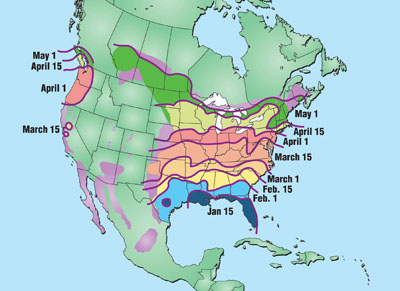
What If Other Birds Try to Nest?
Firstly, determine whether they are a native species such as the Eastern Bluebird, Tree Swallow, or House Wren, or a non-native species such as the European Starling or House Sparrow. This will help determine your next course of action.
If the martins haven’t arrived at your colony site yet, keep the entrances closed to prevent other species from nesting. If you have a native species like Tree Swallows or Bluebirds interested in the martin housing, put up a single-unit nestbox about 30-50 feet away from the martin housing. After they have claimed that cavity you can open up a few entrances on the martin housing.
House Sparrows and European Starlings are non-native species; they should not be allowed to nest in martin housing. You can help control these non-native species by trapping, shooting or nest removal. More information on how to manage these species is available here.
I See Martins!
Great! One of the hardest things in attracting Purple Martins is getting them to notice your site. Your visitors could be martins from a nearby colony site just checking things out or they could be interested in nesting. If you see martins in your area, make sure your housing is up with a few cavities open. If you have any nesting material, either dried white pine needles or cedar shavings, place a few handfuls inside the cavities. If they are adults, don’t be surprised if they only stay a short time. They may be headed back to their colony site from the previous year.
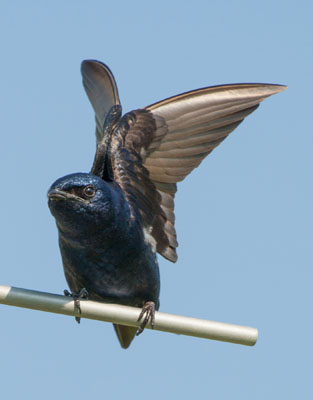
I Have Martins!
Congratulations! Now that you are an active Purple Martin landlord, the real fun has started. The martins will soon begin pairing up and bringing in nesting material. Please consider joining Project MartinWatch, a PMCA Citizen-Science Project where participants monitor their colony by conducting weekly nest checks.
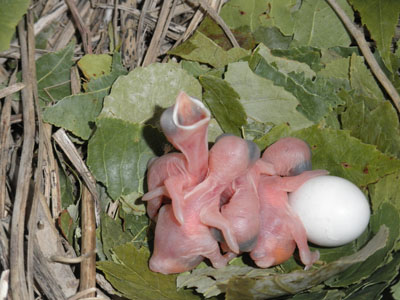
My Birds Are All Gone—When Are They Coming Back?
Quiet outside isn’t it? After the nestlings fledge the martins may stick around for a few weeks, or they may leave right away. Don’t be surprised if you see a large number of martins when the nestlings fledge or after. Martins from nearby colony sites will visit during the day. When the martins leave your colony site they head to a nearby migratory roost. Find out more about roosts here.
